
How to Use DC5V: Examples, Pinouts, and Specs
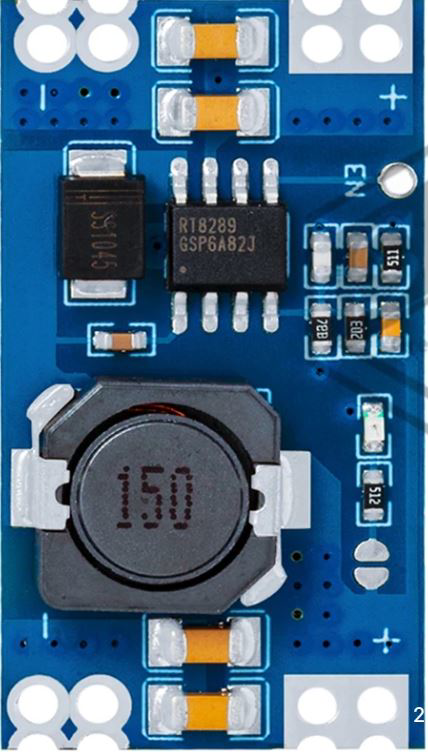
 Design with DC5V in Cirkit Designer
Design with DC5V in Cirkit DesignerIntroduction
The DC5V is a direct current (DC) power supply that provides a stable output voltage of 5 volts. It is widely used in powering electronic devices, microcontrollers, sensors, and other low-power circuits. Its reliability and compatibility with a variety of components make it a fundamental building block in electronics projects.
Explore Projects Built with DC5V
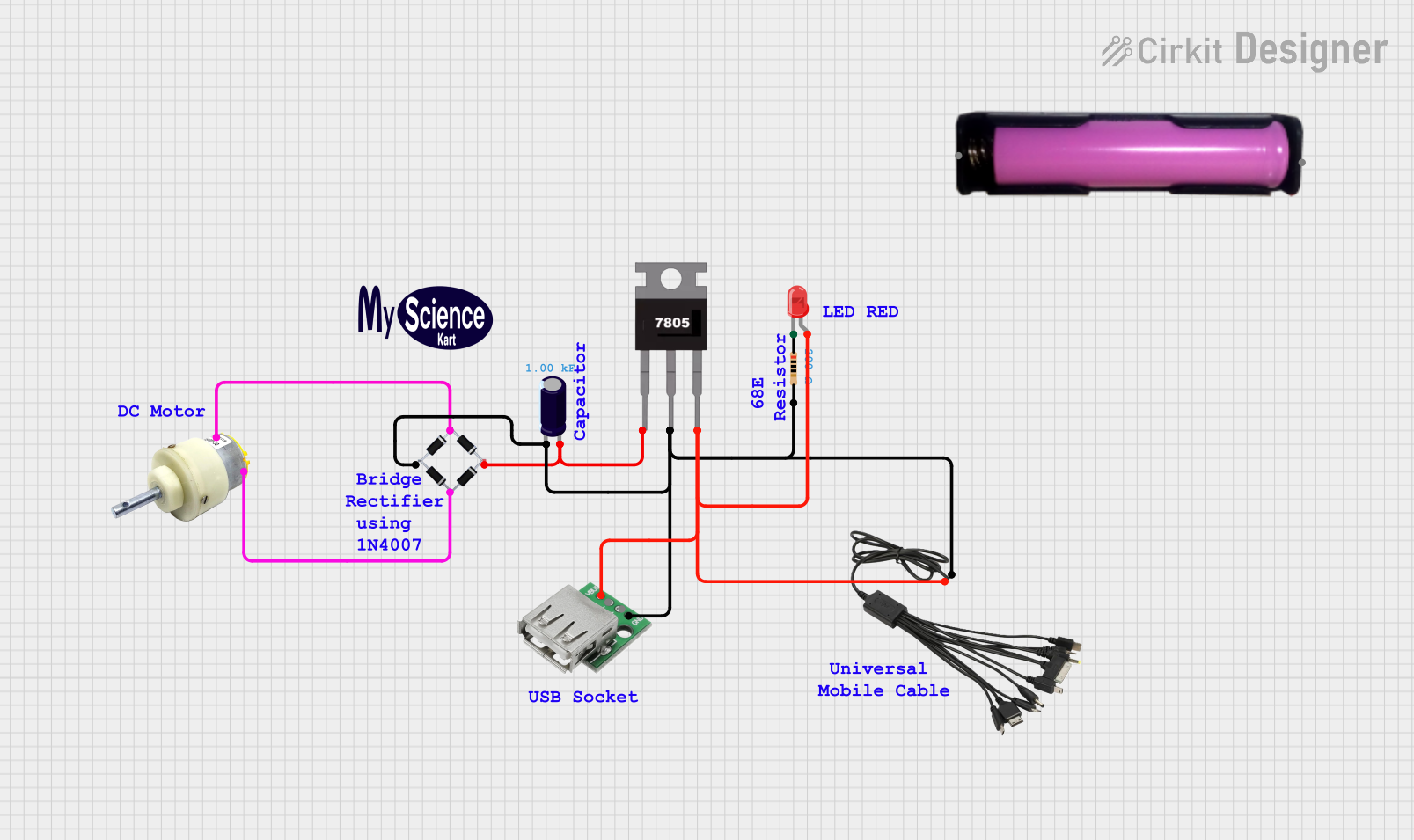
 Open Project in Cirkit Designer
Open Project in Cirkit Designer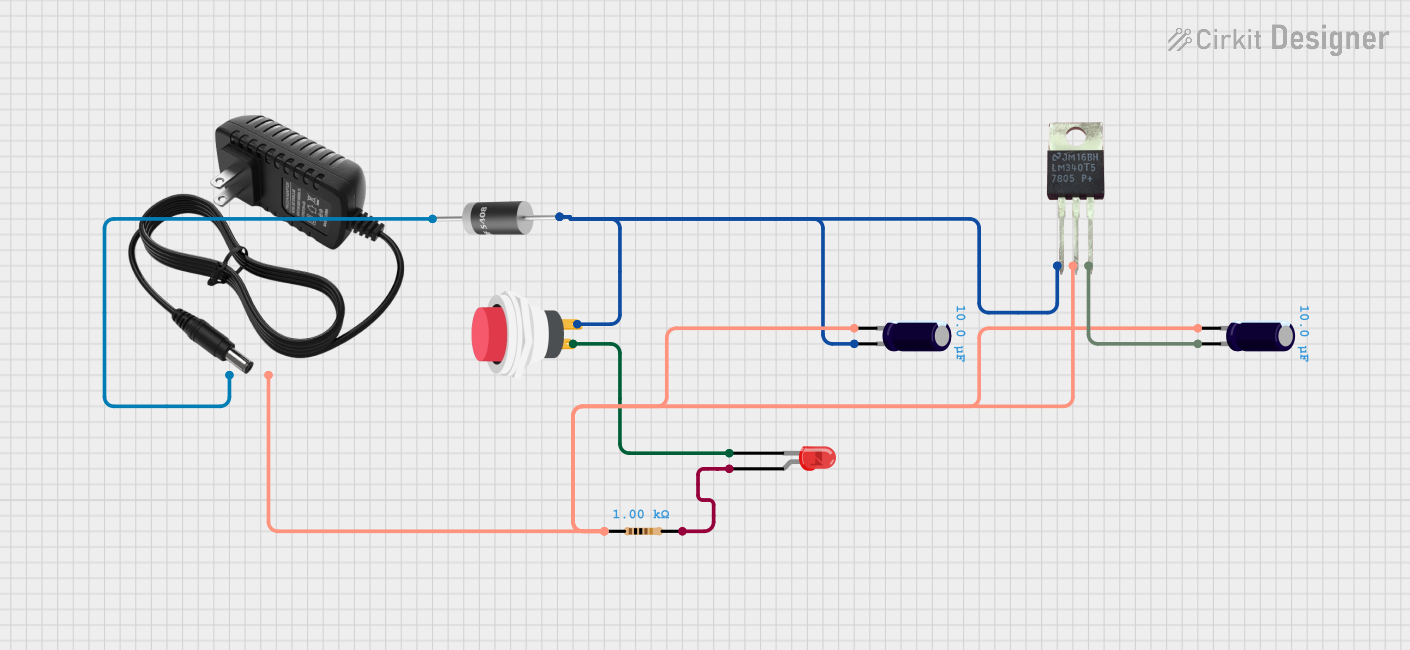
 Open Project in Cirkit Designer
Open Project in Cirkit Designer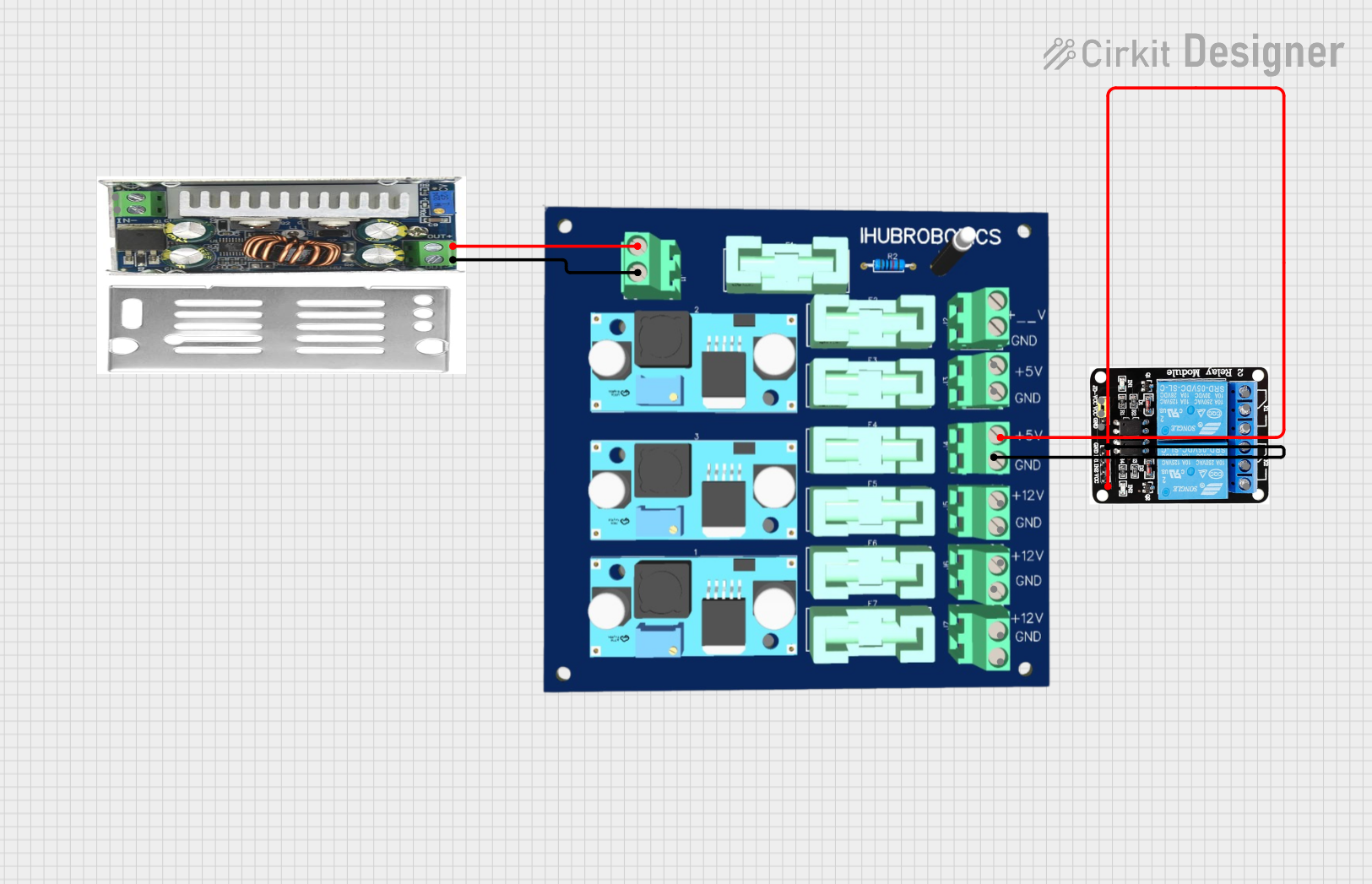
 Open Project in Cirkit Designer
Open Project in Cirkit Designer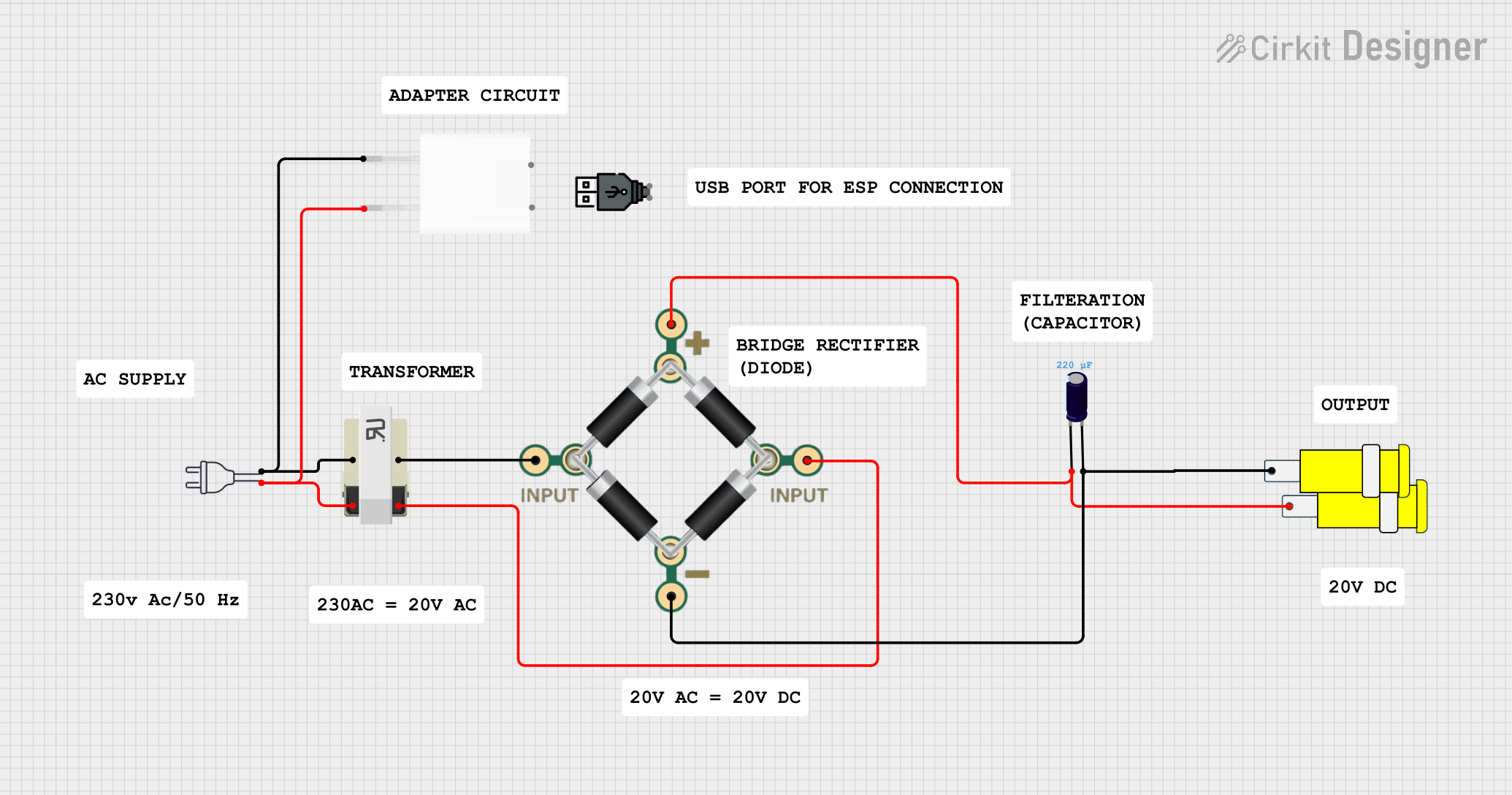
 Open Project in Cirkit Designer
Open Project in Cirkit DesignerExplore Projects Built with DC5V

 Open Project in Cirkit Designer
Open Project in Cirkit Designer
 Open Project in Cirkit Designer
Open Project in Cirkit Designer
 Open Project in Cirkit Designer
Open Project in Cirkit Designer
 Open Project in Cirkit Designer
Open Project in Cirkit DesignerCommon Applications and Use Cases
- Powering microcontrollers such as Arduino, Raspberry Pi, and ESP32
- Supplying power to sensors, modules, and small motors
- Charging USB-powered devices
- Providing a stable voltage source for breadboard prototyping
- Used in portable electronics and embedded systems
Technical Specifications
The following table outlines the key technical details of the DC5V power supply:
| Parameter | Value |
|---|---|
| Output Voltage | 5V DC |
| Input Voltage Range | Typically 100-240V AC (for adapters) |
| Output Current | Varies by model (e.g., 500mA, 1A, 2A) |
| Power Rating | Depends on current (e.g., 5W for 1A) |
| Output Connector | USB Type-A, barrel jack, or bare wires |
| Regulation Accuracy | ±5% |
| Ripple and Noise | <50mV |
| Operating Temperature | 0°C to 50°C |
| Storage Temperature | -20°C to 85°C |
Pin Configuration and Descriptions
For DC5V power supplies with bare wire outputs, the pin configuration is as follows:
| Pin | Description |
|---|---|
| + (Positive) | 5V DC output (red wire) |
| - (Negative) | Ground (black wire) |
For USB-based DC5V power supplies, the pinout is as follows:
| Pin | Description |
|---|---|
| VBUS | 5V DC output |
| GND | Ground |
| D+ | Data line (not used for power) |
| D- | Data line (not used for power) |
Usage Instructions
How to Use the DC5V Power Supply in a Circuit
- Identify the Output Terminals: For bare wire outputs, connect the red wire to the positive terminal of your circuit and the black wire to the ground terminal. For USB-based supplies, simply plug the USB connector into the appropriate port.
- Verify Voltage Requirements: Ensure that the components in your circuit are rated for 5V operation. Exceeding the voltage rating of a component can cause damage.
- Connect to the Load: Attach the DC5V output to the input terminals of your circuit or device.
- Power On: Plug in the power supply to an AC outlet (if applicable) and switch it on.
Important Considerations and Best Practices
- Check Current Ratings: Ensure the power supply can provide sufficient current for your circuit. Overloading the supply can cause overheating or failure.
- Avoid Short Circuits: Double-check connections to prevent short circuits, which can damage the power supply and connected components.
- Use Decoupling Capacitors: For sensitive circuits, add decoupling capacitors (e.g., 0.1µF and 10µF) near the power input to reduce noise and stabilize the voltage.
- Heat Dissipation: If the power supply becomes warm during operation, ensure proper ventilation to prevent overheating.
Example: Using DC5V with an Arduino UNO
The DC5V power supply can be used to power an Arduino UNO via its barrel jack or USB port. Below is an example of connecting a DC5V supply to an Arduino UNO and controlling an LED:
Circuit Connections
- Connect the DC5V power supply to the Arduino UNO's barrel jack or USB port.
- Connect a 220-ohm resistor to pin 13 of the Arduino.
- Connect an LED's anode (long leg) to the resistor and its cathode (short leg) to the GND pin.
Arduino Code
// This code blinks an LED connected to pin 13 of the Arduino UNO.
// Ensure the DC5V power supply is properly connected to the Arduino.
void setup() {
pinMode(13, OUTPUT); // Set pin 13 as an output pin
}
void loop() {
digitalWrite(13, HIGH); // Turn the LED on
delay(1000); // Wait for 1 second
digitalWrite(13, LOW); // Turn the LED off
delay(1000); // Wait for 1 second
}
Troubleshooting and FAQs
Common Issues and Solutions
No Output Voltage
- Cause: The power supply is not connected to an AC source or is faulty.
- Solution: Verify the AC connection and check for any visible damage to the power supply.
Overheating
- Cause: The connected load exceeds the power supply's current rating.
- Solution: Reduce the load or use a power supply with a higher current rating.
Voltage Drop
- Cause: Long wires or high-resistance connections.
- Solution: Use shorter, thicker wires to minimize resistance.
Noise in the Circuit
- Cause: Insufficient filtering or high ripple from the power supply.
- Solution: Add decoupling capacitors near the power input of your circuit.
FAQs
Q: Can I use a DC5V power supply to charge my phone?
A: Yes, if the power supply has a USB output and provides sufficient current (e.g., 1A or 2A), it can charge most phones.
Q: Is it safe to use a DC5V power supply with a higher current rating than my device requires?
A: Yes, the device will only draw the current it needs, as long as the voltage is 5V.
Q: Can I connect multiple devices to a single DC5V power supply?
A: Yes, as long as the total current draw of all devices does not exceed the power supply's maximum current rating.